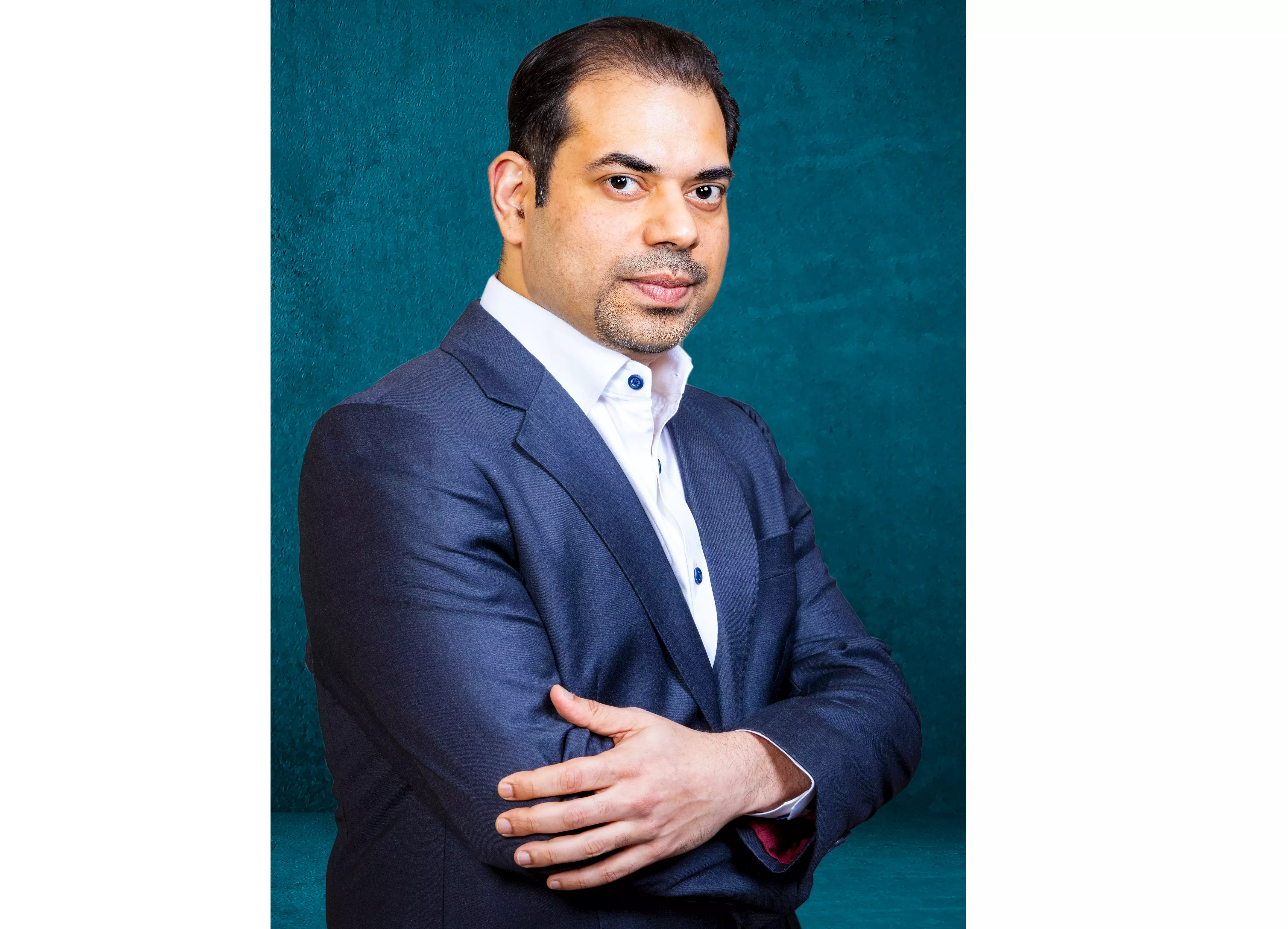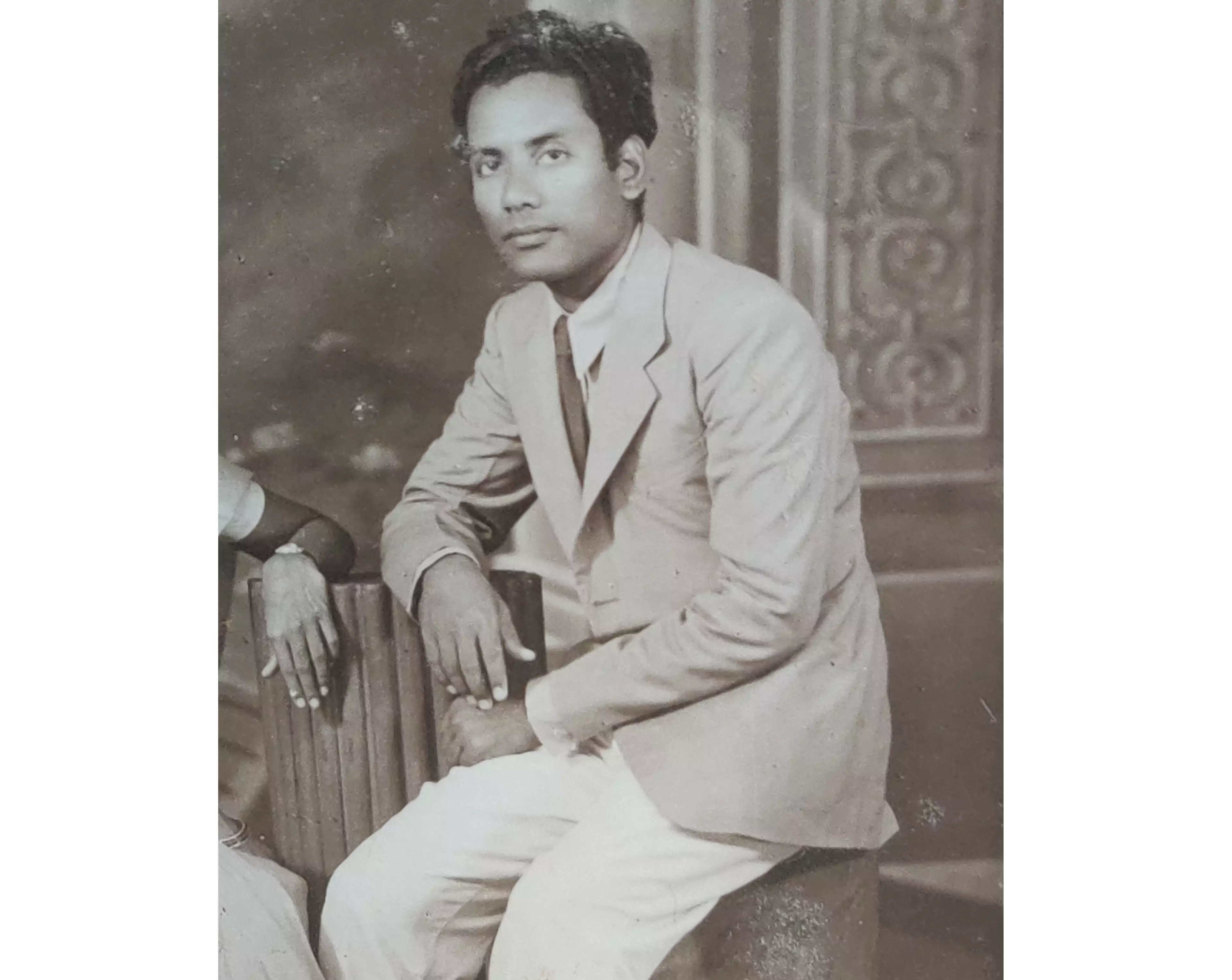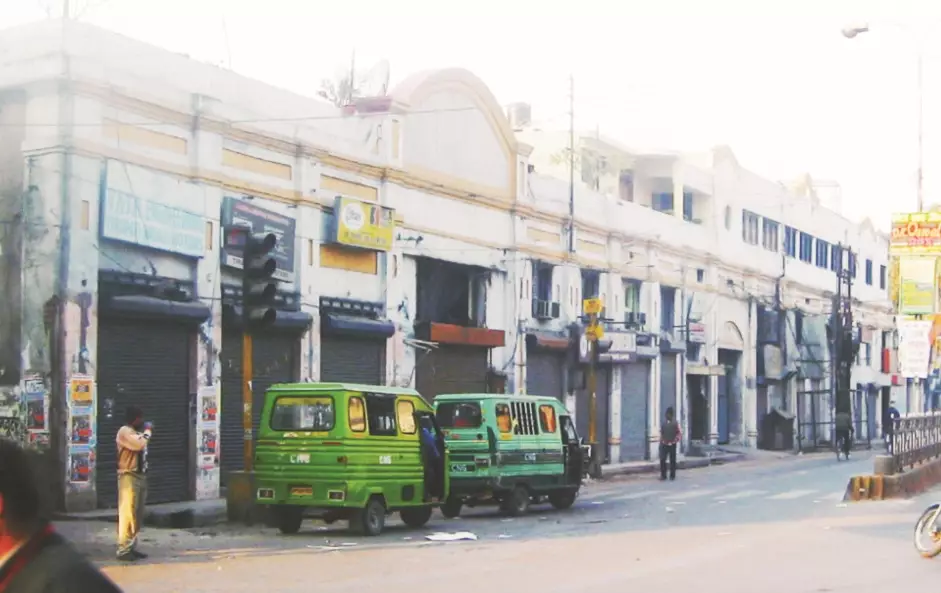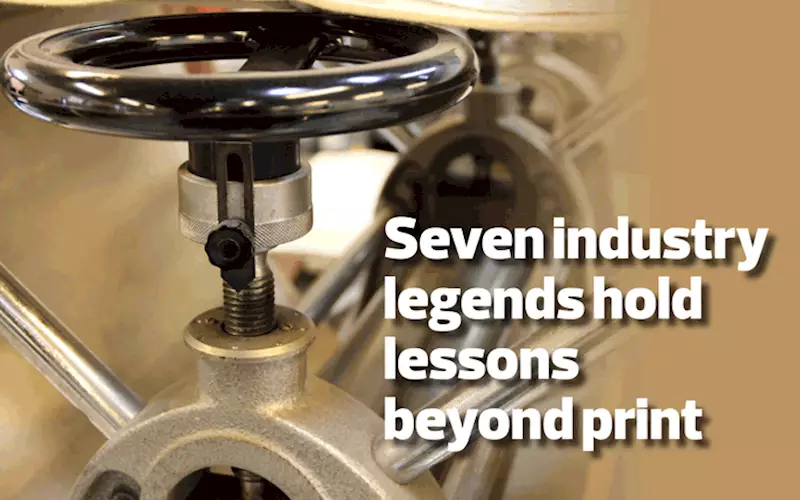Seven industry legends hold lessons beyond print - The Noel D'Cunha Sunday Column
On 15 August, India celebrated 75 years of Independence. Print has been an integral part of the freedom movement. In this Sunday Column, PrintWeek looks at the economic journey and technology transformations over seven decades.
21 Aug 2022 | By Noel D'Cunha
2 August 1918. Varanasi. Freeman & Co at the Theosophical Society Compound. Dr Vipul Pandya, who helms Ratna Offset in Ahmedabad and Varanasi, says, “Freeman & Co was founded in 1894 by my great grandfather Shankar Nath Pandya with five of his friends” Shankar Nath was a Gujarati Brahmin born in Benares city. Pandya says, “Shanker Nath was educated in the Royal College of Ajmer known as Mayo College. His friends were Bengali and Marathi but had their roots in Varanasi.”
Dr Annie Besant stayed in Benares from 1893-1896 - and established the headquarters of the Indian Section of the Theosophical Society as well as the Benares Central College (later changed to Benares Hindu University). Pandya shares, “Dr Besant wanted to print the literature of the Theosophical Society and Indian National Congress in Banaras, and my great grandfather was assigned the task to establish a printing press” He adds, “Freeman was a teacher and mentor of Dr Annie Besant. That’s how the press was established in the campus of the Theosophical Society compound.”
Those days, printers worked with bronze-cast big-size fonts like 36pt, 48pt and 64pt imported from the UK. Pandya shares a commentary on The Bhagavad Gita, which was published in 1897. The book has been manually typeset as Freeman owned four UK-made hand-casting machines in the Freeman press located in the Theosophy grounds in Varanasi.
Manipal's technology push
OPA, a print association in Ludhiana, embarked on chronicling the role of the oldest continuously existing print entity in India. The inputs were fascinating. Be it: Narain Printing Works (1925) from Hoshiarpur to the Ramji Press in Kanpur, established in 1929. Most of these presses claimed heritage status. Others had sole proprietorship during their grandfather’s time (1930s in today’s Pakistan). Some evolved into a partnership in their father’s era (1950s).
Some became a company in 1941, like Manipal Press in Manipal. Today, Manipal Technologies (MTL) is part of the diversified USD two-billion enterprise Manipal Group, which supports industries such as banking, financial services, and insurance (BFSI) sectors, governments, logistics, manufacturing healthcare, IT, retail and above all printing and publishing; with a workforce of 8,000+ providing solutions with business operations in India, Germany, Kenya and Nigeria.
Gautham Pai is the third-generation scion of the renowned Pai family that founded Syndicate Bank, India’s oldest commercial bank with rural HQ. When he joined the company, it was called Manipal Power Press. Then it was Manipal Press. Manipal Power Press continued to be one of the top three in the country in commercial printing. Pai says, “We were known among clients for our superb quality and timelines. The business continued to evolve as clients' expectations and business needs kept changing rapidly."
When the telecom boom transpired in 2006-2007, MTL operated in the commercial print territory. Also, security printing was a well-established branch of business, which meant printing chequebooks, share certificates, dividend warrants, and business forms such as courier airway bills and labels. So when the telecom boom occurred, internal research suggested that India would be a pre-paid market and consumers will need recharge telephone cards.
Pai recalls, “Most people didn’t agree with us. After all, what does a printing company know about manufacturing cards? It’s a different process. It’s a lot about die-cutting, variable data, etc. But it turned out to be a great business. And in a short time, that business prospered from zero to Rs 80-crore.”

Gautham Pai of Manipal Technologies
During that time, telecom customers from Mumbai were seated in the Manipal plant since they needed to run their business and they couldn’t do it without having recharge cards. Pai says, “Thus, instead of my team chasing customers, the telecom bigwigs were seated in Manipal and offering to pay extra to produce our cards first.”
However, there’s a downside to this. Pai says, “The entire business shifted to digital. Today that recharge card business is zero. Rs 80-crore to zero. It is the same as other businesses. For example, we produced food coupons where the government distributes these coupons, and the citizens could accrue direct benefits from the food coupons instead of visiting the ration shop. Again, it used to be a Rs 50-crore business. Today it is zero.
Similarly, the printing of telephone directories became zero. But MTL continued to engage in new areas of business. As one door was closing, we were busy opening three more doors. With large R&D investments, new innovative solutions and business models were deployed.”
As technology develops, India evolves. Today, the country is migrating to mobile-based transactions, such as the united payment interface (UPI) and Aadhaar. Pai says, “We had to change with the times.” Manipal Technologies set up a business in virtual cards. These are virtual credit cards, but with additional security. The card number changes every few seconds. They can be accessed through mobile phones. Pai says, “This worked very well in urban centres. However, in rural India, we needed to find another solution. So we set up an acquiring business where we enable merchants to make minimal digital payments. We started acting on this plan in 2019.
On cue, they tapped 2,50,000 merchants in rural India. The company has partnered with several banks to provide door-step-banking too. While developing a solution, the key is to focus on the end-client and their needs and conveniences.
The shopfloor a British PM visited
This is now; what about then?
Like Manipal Technologies, many presses existed in the Mumbai-Pune belt: Ganpat Krishnaj’s press, Jawji Dadaji’s Nirnaaysagar Press, Mangeshrao Kulkarni’s Karnataka Press, Sonyabapu Dhawle’s press. Among these is India Printing Works (IPW), which has survived for over 90 years.
IPW, founded in 1932 by Appasaheb Bambardekar and Dadasaheb Limaye, were both men of character. A proud citizen of Shivaji Park, Anand Limaye, speaks about his father. “He was meticulous, principled and a perfectionist. He never sat in a cabin nor used the bell. His USP was – time-management. Very humble and popularly known as God’s man.” Why, I ask, Limaye? “Many reasons," he says. "For instance, father ensured the operator ran the press while a full-fledged riot was raging to meet a book deadline for a Marathi publisher.”
Once, while sauntering through the IPW bindery in Wadala, I chanced upon a photograph of Harold Macmillan stuck to the wall. I peeled the photograph and asked Anand Limaye, is this the Tory PM? It seems he had visited the press and scribbled a letter in red ink. Where is the letter, I asked Limaye, and he said, I think it is misplaced.
This was the era when proof-readers at IPW devoured dictionaries in their spare time. Where the number of colour pictures on a page meant a treat of an equivalent number of idlis. Words were equal to chai. Where “a good guy” almost became “a good gay”; if an operator hadn’t been alert.
Bombay, Vakils and Gandhi
Very similar to Vakils & Sons, which was incorporated in 1946.
But the Vakils history predates 1956. Vakil & Sons was a partnership firm that was established in 1926 by Rustam Vakil, a lawyer. He and his two sons managed it. Hence the name Vakil & Sons. KU Mehta bought a majority stake from the Markar family in 1949. He was the managing director till 1951. Then GU Mehta took over in 1951 and was its managing director till 1986. After which it was Arun Mehta.
Akil Contractor, who worked in the family-owned Rainbow Inks for 21 years before he embarked on his enterprise Print Dynamic in 2002, says, "Arun Mehta was a brilliant man. He was an old friend of our founder and our eldest uncle Noman Contractor of Rainbow."
In the 1950s, some of the Bombay printers, which included GU Mehta, Naval Ardeshir, Nomanbhai Contractor, S Ramu, KC Raman Middleton, Jairambhai Patel, Framrose Poonawala plus many others, decided that they should form an Association to take up the matter concerning the printing industry with the local government. They called it the Bombay Master Printers Association (BMPA).
Arun Mehta, the chairman and managing director of Vakils, passed away in July. Besides being a renowned greeting card specialist and publisher of repute, there was the Mahatma Gandhi connection. In 2008, Prof SR Mehrotra walked into Mehta’s cabin in his Prabhadevi office. The first thing Mehrotra said was, “Are you Arun Mehta, the great-grand-nephew of Dr PJ Mehta?” to which Mehta replied, “Yes, I am, but beyond that, I know nothing more.” This was the beginning of their association.
During the next few years, Mehrotra wrote The Mahatma & the Doctor – The Untold Story of Dr Pranjivan Mehta Gandhi’s Greatest Friend and Benefactor and Vakils, Feffer and Simons published it. The book is a chronicle of Pranjivan Mehta’s association with Gandhi as a mentor and a friend.
Like IPW, Vakils believed proofreading was very important because there was no way to guarantee error-free output all the way to the printing press. Presently, Vakils works with pharma companies that require several thousand artworks for their products. While the timely delivery of packaging artwork is crucial to business, a single mistake in labelling can cause recalls, lawsuits and regulatory fines.
Bimal Mehta, managing director of Vakils Premedia, says, “The pharma companies insist on 100% accuracy because even a comma out of place could become a million-dollar legal issue.” It is the 21st-century avatar of proofreading. Arun Mehta used to call it - maintaining data integrity.
The origins of Pragati
As per P Narendra of Hyderabad-based Pragati, the India story is bullish. He says, “India is expected to be the world’s fifth largest consumer market by 2025. The packaging industry, he adds, is the third largest after food and energy, and it’s worth USD 917 billion (in 2019), with 2.8% CAGR - of which the Indian share is 4%. The sector growth to be 22-25% CAGR (as per the Packaging Industry Association of India).
Pragati Art Printers is the story of Paruchuri Hanumantha Rao, who began his print journey with Rs 4,000. The reason was simple. The cinema studios that Rao was working for were shut down due to no import of film during the China war of 1962. As the story unfolds, in 1965, his brother-in-law, Neelakanteswara Rao, joined the company. Together they marched forward. Pragati was a letterpress unit till 1975. A single-colour Russian offset machine was purchased at an auction.

Paruchuri Hanumantha Rao
Rao’s sons Narendra and Mahendra joined the company. A turning point was a move to purchase a phototypesetter in 1979. This was the first ever in South India in a commercial printing set-up. As all the advertising agencies had to patronise Pragati, the business grew. Today the Rs 250-cr Pragati operation has four factories and a multiple international Sappi award winner and plus PrintWeek Awards too.
The press that was born in a cinema house
Print inhabits a disordered world.
At the other end of the spectrum is Kakinada Press, which started under the name of Kakinada Binding Works in 1937. Situated at Hanuman Bazaar in Brahmapur, the press was a supplier to Brahmapur Co-op Central Bank and Brahmapur Co-op Urban Bank. As per the print industry lingua franca, Kakinada was “a job printer” who catered to the business community of Brahmapur. The press supplied ledgers and chequebooks to all the cooperative banks in the state.
It all began with Atmakuri Subba Rao, who was one of the proprietors of the first cinema hall in Odisha, SSV Talkies (established in 1927). They had a press in the cinema hall premises to print tickets. They couldn’t manage to print these tickets. LA Swamy was asked to manage the press for four to five years.
Then he branched out and started a press in Hanuman Bazaar with two letterpress machines, one Chandler & Price and one Dodson.
LA Swamy died young in the 1970s. His son Laveti Ramakrishna was 14 years old. Due to family issues, his brother stopped his education, and he worked in the press. Laveiti Ramakrishnan was a compositor from 1970 to 1978. He built Kakinada, impression by impression. His son Arun Kumar joined the business in 2012.
Ramakrishna says, “Arun is empowered with an MBA from London. He manages the press along with me.” Kakinada invested in a five-colour press. Perhaps the first ones in South Odisha to do so. But it coincided with the arrival of Covid in 2020. Ramakrishna says, “Our business has been completely wiped out from March 2020 onwards.”
It’s back to re-building.
The star of Kanpur
This is why Kanpur’s Solar Press was busy with its greenfield factory project during the pandemic months. The aim is to cater to the packaging requirements of the SME and MSME home-made brands.
Solar Press was established as Star Press in 1904. Its founder was Ayodhya Prasad Bhargava (the great grandfather of the present generation) in a kothi called Swiss Cottage, 19/25, Ram Narain Bazaar, Kanpur.
The press was located in a quaint two-storey building in the old downtown, purchased from a British gent. The premise was 400-sq yards, and the press started with a Chandler & Price machine, one guillotine and a few composition cases. It functioned with two-three workers and used to run for six days from 8am to 12noon and 1pm to 5pm.

Star Press catered to the city's British merchants and private industries. The jobs printed at Star Press during the time included a tent and dhurrie price list for the Elgin Mills Company, an art catalogue of village industries for the Alliance Advertising Association, and a catalogue for Empire Engineering. Today, the product portfolio includes hosiery boxes, spice boxes, pharma and incense sticks.
The cities Solar Press is targeting is: Faizabad (now Ayodhya), Maharajganj, Gorakhpur, Farukhabad, Gonda, Kannauj, and Jhansi.
As Govind Bhargava of Solar Press says, “In 1858, Nawal Kishore Bhargava founded the Nawal Kishore Press in Lucknow. He adopted modern technology and improved marketing between the years 1865 and 1872. We hope to emulate him and our other forefathers.”
Bhargava shares anecdotal information about proofreading. He says, "My grandfather Kailash Nath Bhargava was brilliant till his last days of working in the 1990s. The British were amazed by the error-free printing. No matter how many pages a book, the work was produced without a blemish. Also, his experience of about six decades in balance sheet printing made my grandfather spot mistakes that professional CAs overlooked. That was the kind of trust our firm commanded from important companies in Kanpur who would never think of going to any other press for their work."
This was the message in Goa at the BMPA conclave. On a stormy day in July, more than a hundred print-packaging A-Listers gathered to discuss the industry's future. Almost all of them are bullish. They saw paper-based packaging as a major advantage in the sustainability move. They aimed to tap high-value-added packaging. Digital automation was at the top of their minds. Most CEOs were in expansion mode; or a strategic focus on geographical outreach. After two days of deliberations, the consensus is ambitious revenue opportunities and double-digit growth.
Happy Azadi Ka Amrut Mahatosav.
PS: These are seven industry legends. But we are sure there are many more which our readers would be interested to know more about. Do share the stories and pics on: noel@haymarketsac.com











 See All
See All